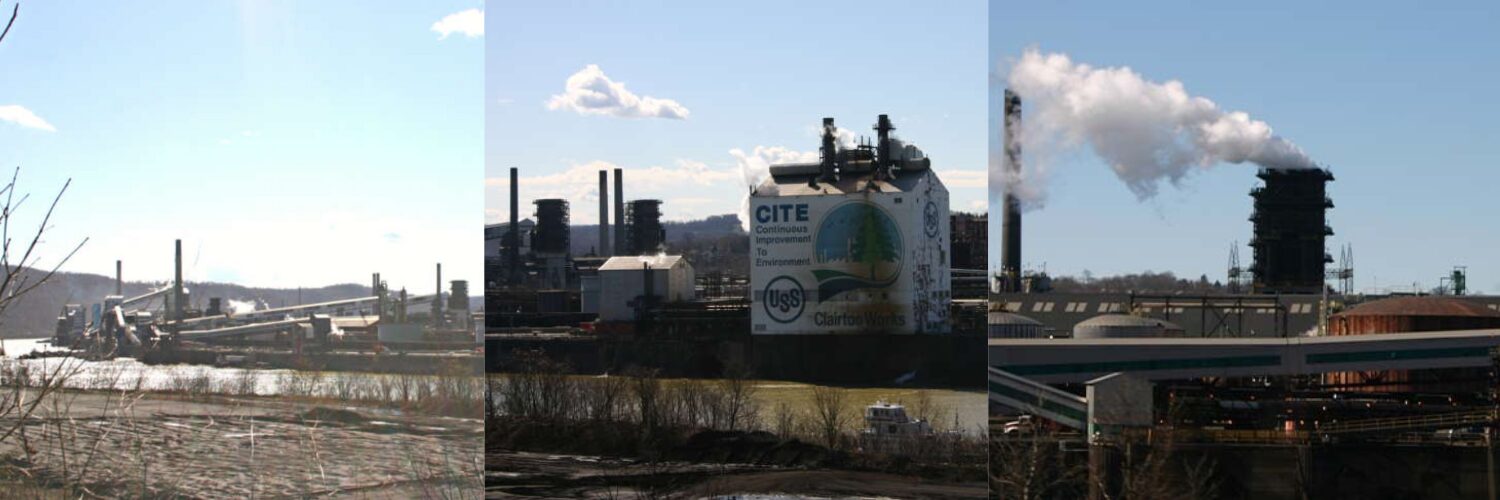Benzene
What is Benzene?
A colorless liquid with a sweet odor, benzene, or benzol, is an organic chemical compound that is a known carcinogen. It can be naturally produced by volcanos and forest fires—quickly evaporating once exposed to air. It is typically a by-product of coke and is used in many items that we find in everyday society. As an industrial chemical, it can be found in crude oil and gasoline and because it is a powerful solvent, industrial facilities will use it to clean and degrease large pieces of machinery.
Benzene was first identified in the 1800s, and throughout the 20th century, scientists and researchers not only investigated its uses, but also the many ways benzene could be produced. By the mid-1800s benzene was produced on an industrial scale using the “coal-tar” method—a method that involved extracting benzene from coal tar, a thick liquid that is a by-product of coal. Oil refineries, chemical plants, oil and gas wells, and steel mills are all industries in the United States where workers can suffer from benzene exposure. Since benzene is a by-product of coal, employees who work with or near coke batteries are at a higher risk for several forms of cancer such as acute myelogenous leukemia (AML) and multiple myeloma.
Complete List of Cancers and Health Problems Associated with Benzene.
Cancerous Conditions
- Acute myeloid leukemia (AML)
- Acute lymphocytic leukemia (ALL)
- Chronic lymphocytic leukemia (CLL)
- Multiple myeloma (MM)
- Non-Hodgkin’s lymphoma
When coal is heated to temperatures close to 2,000°F in a closed, oxygen-deprived area, the coal turns into coke and releases chemical compounds in the form of vapors and gases. Known as “coke oven gas,” these vapors typically contain benzene, toluene, and xylene. These chemicals can then be sold to manufacturers to be used to make plastics, wood preservatives, paints, adhesives, explosives, gasoline, synthetic fibers, and rubbers. The remaining clean coke gas is processed and used in fuel and reheating furnaces and batteries.
Some of the earliest uses for benzene involved common household items. The sweet odor led to its use as after-shave lotion in the late 19th century. The turn of the 20th century saw the chemical used to decaffeinate coffee and was frequently used as an industrial solvent. The first major use as a solvent in the rubber industry began in the early 1900s and increased when toluene, one of the by-products produced in the coke ovens, was used to manufacture various explosives in World War I. Post-war, it was used as a solvent in many additional areas, including rubber goods, dry cleaning, petroleum products, blending of motor fuels, coatings and automobile manufacturing.
In 2015, the EPA estimated that 5 million Americans are at risk of benzene exposure and illness because of how much benzene is released into the air by the nation’s 149 oil refineries. Understandably, those working with and around benzene are at much greater risk of exposure as benzene is easily inhaled and can be absorbed through the skin if contact is made.
- Steel workers
- Refinery workers
- Painters
- Shoe makers
- Lab technicians
- Gas-related industries
- Chemical plant workers
- Rubber industry
- Paper/pulp factory workers
- Dry cleaning
- Fire Fighters
Products such as glues, furniture waxes, detergents, and paints may contain benzene and during use, may release it in gases or vapors. Water may become contaminated with benzene when underground storage tanks from hazardous waste sites are damaged and begin leaking.
When exposed, benzene disrupts the normal functions of cells and causes them to malfunction. It prevents the bone marrow from making enough red blood cells and changing the levels of antibodies to the point of losing white blood cells. This effect on the bone marrow can result in leukemia, specifically AML. Long-term exposure to benzene can result in excessive bleeding, anemia, and decreased immune response. Breathing in benzene causes drowsiness and dizziness, and can result in unconsciousness and death.
With both short- and long-term effects, benzene poisoning can have different results depending on an individual’s exposure levels and medical histories. Ingesting benzene through food or drink laced with high levels of the chemical compound can cause stomachache, vomiting, sleepiness, convulsions, and even death. Since the International Agency for Research on Cancer evaluated benzene in 1987 and concluded that there was an increase of leukemia in benzene workers, benzene has also been found to play a significant role in other cancers such as multiple myeloma, lung cancer, and non-Hodgkin’s lymphoma.
The first documented case of leukemia caused by benzene exposure was in 1928, and by the late 1940s, documents from a toxicological profile by the American Petroleum Institute stated that the only safe level of concentration of benzene is zero. Despite this knowledge, benzene remained common in the industry. Workers have developed and died from leukemia as a result of fewer than five years of exposure or after more than three decades of exposure to benzene. Today, benzene ranks as one of the top 20 chemicals produced in the United States.
Toxic exposure to benzene can have devastating consequences on both the victim and their family. If you or a loved one has been affected by benzene poisoning, diagnosed with AML, multiple myeloma, or other benzene-caused cancer, please contact one of our toxic tort attorneys today. Our benzene lawyers have helped many people negligently exposed and harmed by these toxic fumes.

Clairton Coke Works – Toxic Exposures
Located 20 miles south of Pittsburgh along the Monongahela River, Clairton Coke Works is the largest coke manufacturing facility in the United States, producing 4.7 million tons of coke annually.
Coke plants are an integral part of the steel industry. Its primary purpose is to transform coal into coke, which acts as both a fuel and a reducing agent in blast furnaces. As the coal is heated and coke produced, a number of byproducts are generated, such as coke oven gas, coal tar, ammonia, and sulfur compounds. For decades, pollution has been an on-going concern not only for the employees of Clairton Coke Works, but the residents in the surrounding communities as well. Clairton Coke Works is a major source of sulfur dioxide emissions, which can harm the respiratory system and make it difficult to breathe.
On December 24, 2018, a fire broke out at Clairton Coke Works, and subjected residents to harmful particle and sulfur pollution for over three months.
A corroded sprinkler pipe, weakened by years of leaks, collapsed, and severed a lubricating oil line, igniting the fire in Control Room #2 which is the building inside the complex responsible for the plant’s pollution control system. The damage led to a massive release of sulfur dioxide and significantly impacted the air quality in the surrounding areas, exposing nearby communities to high levels of pollution. The incident led to a lawsuit against US Steel. As part of the settlement in 2024, Battery 15 (most notably the dirtiest Battery) was permanently shut down in an attempt to lower harmful emissions such as sulfur compounds, fine particulates and benzene. US Steel was also tasked with reducing hydrogen sulfide emissions by nearly 30 percent.
Benzene, a byproduct of coke is a known carcinogen posing a significant long-term health risk, including increased risk of leukemia and other cancers, for those exposed to elevated levels. As the largest coke plant in the US, Clairton Coke Works is the largest source of benzene in Allegheny County.
In early 2024, the Environmental Integrity Project reported that benzene levels were between two and fourteen times occupational exposure limit at certain areas new coke plants in Alabama, Indiana, and Pennsylvania. The OEL recommended by the American Council of Governmental Industrial Hygienists is no more that 60 micrograms per cubit meter based upon an 8- hour average. For Clairton Coke Works, it benzene concentrations far exceeded the limit, with recordings from 123 to 620 micrograms per cubic meter.
In June 2024, the EPA issued a new rule requiring Clairton Coke Works implement fenceline air monitoring for benzene levels. This rule also establishes new limits on visible emissions and other hazardous air pollutants. The plant will be required to take action to lower emissions if the monitors detect a 12-month average of 7 micrograms of benzene per cubic meter. This new regulation follows previous fenceline monitoring data that revealed concerning benzene levels: from 2022 to 2023, measurements ranged from 2.4 to 32 micrograms per cubic meter. Even more alarming, from 2021 to 2022, levels ranged from 2.99 to 16.7 micrograms per cubic meter in just two weeks.
$800 Million Verdict
Setting a precedent for future toxic exposure lawsuits.
In a recent court ruling, ExxonMobil was ordered to pay over $800 million in a case involving a worker’s exposure to benzene. The plaintiff, a mechanic at Mobil service station who was diagnosed with AML, claimed his cancer was caused by years of exposure to benzene by handling gasoline and benzene-containing solvents. The plaintiff alleged exposure through inhalation and skin absorption that ultimately resulted in the blood cancer diagnosis in 2019.
A jury found ExxonMobil liable for failing to warn the plaintiff about the dangers of benzene despite knowing about risk between benzene exposure and blood cancer development. The jury initially awarded $725 million in damages, but the judge later increased the award. This brought the total judgement against ExxonMobil to $816 million.
Sources
-
“Benzene” Center for Disease Control [Link]
-
“Benzene” Environmental Protection Agency [Link]
-
“Benzene” Occupational Safety & Health Administration [Link]
-
“Benzene” World Health Organization [Link]
-
Reid Frazier, “Epa Coke Oven rule To Bring New Monitoring Requirements To US Steel’s Clairton Plant,” The Allegheny Front (June 2024). [Link]
-
Clean Air Council, “Harmful Air Pollution from US Steel Reduced as a Result of Pennenvironment, Clean Air Council Lawsuit” (June 2024). [Link]
-
Environmental Integrity Project, “ Air Monitoring Shows Toxic Benzene Levels Inside Coke Oven Plants Far Above Recommended Occupational Safety Limits,” (March 2024). [Link]
-
Historic Pittsburgh, Clairton Coke Works [Link]
-
Clark Mindock, “Exxon Hit with $725.5 Million Verdict Over Mechanic’s Leukemia Diagnosis” Reuters (May 2024). [Link]


